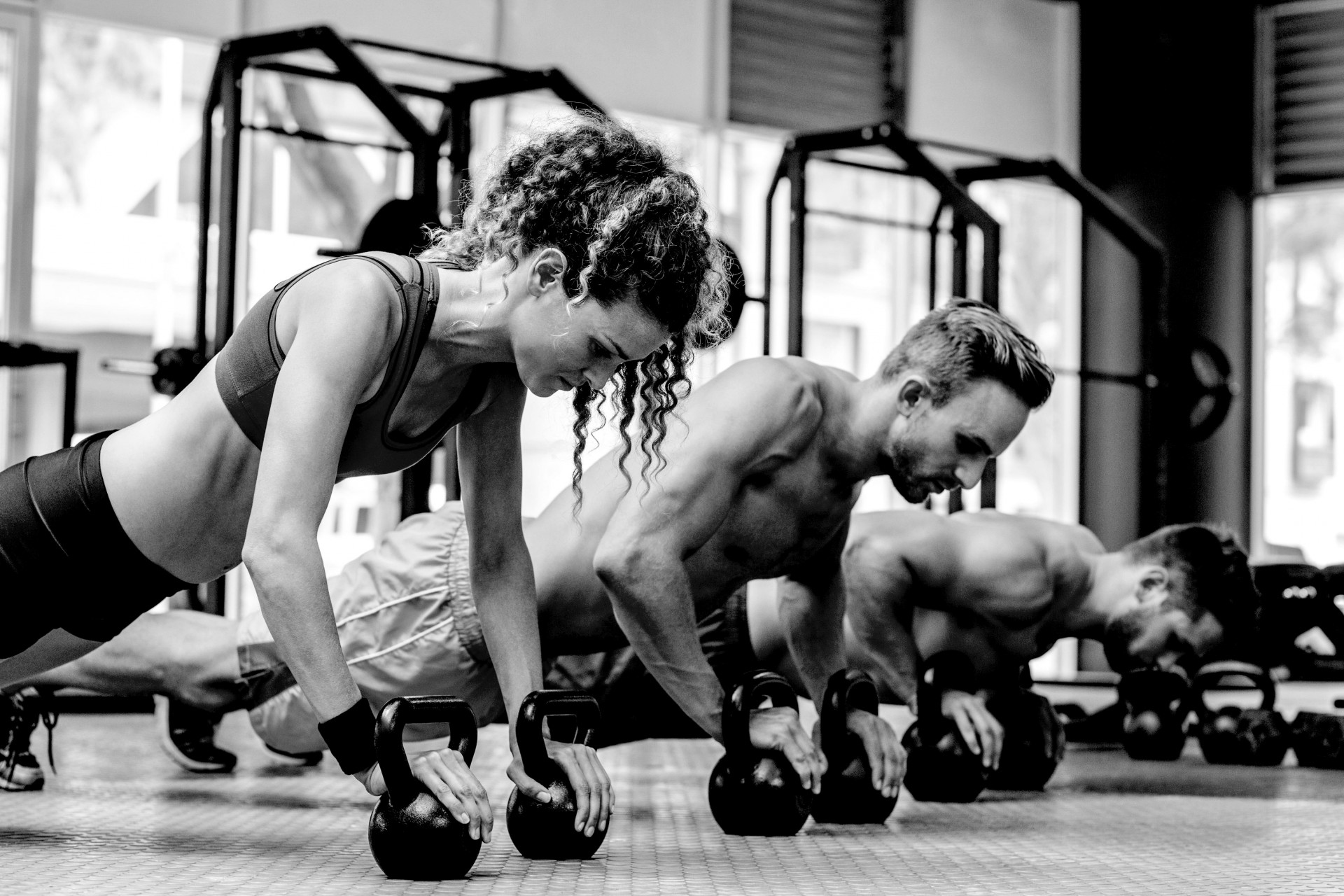
The Power of the Bell
Two words: Asymmetrical load. Unlike a perfectly balanced dumbbell or barbell, a kettlebell is built like a cannonball with a handle on top. This imbalanced load challenges stabilizing muscle fibers throughout your body—muscle fibers that might not be stimulated during traditional weight lifting. And while you can curl, press, and squat with kettlebells—just as you would with conventional weights—kettlebells lend themselves to a host of other, unique exercises. In the following pages, you’ll learn the kettlebell swing and other unique moves—and learn how kettlebells can beneficially augment traditional moves. This month’s kettlebell workout integrates these moves into high-intensity circuits for a workout that’s as much of a conditioning challenge as is a muscular one.
THE KETTLEBELL WORKOUT
DIRECTIONS: Do the following workout 3-4 times per week. Do Part I as a continuous circuit three times through; don’t rest between exercises and rest only 1-2 minutes at the end of each round. After three rounds of Part I, complete three rounds of Part II; don’t rest between exercises and rest only 1 minute between rounds.
PART I
EXERCISE REPS
KB Swing X 25
KB Curl X 10 (each arm)
KB Goblet Squat X 15
KB Overhead Press X 10 (each arm)
KB Row X 10
PART II
EXERCISE REPS
KB Pushup X 20
KB Russian Twist X 20 (each side)
Plank X 60-90 seconds
EXERCISE DESCRIPTIONS
KB SWING: (Pictured above) Hold a kettlebell with two hands and stand with your feet wider than shoulder width. “Hike” the kettlebell back between your legs, bending at the hips and slightly at the knees. Explosively reverse direction, keeping your back flat. Swing the bell up to eye level (or overhead). Swing it downward and immediately begin your next rep.
KB CURL: (Shown on previous page) Hold a kettlebell in one hand, letting it hang down to your waist. Flex your biceps to curl the weight up to your shoulder. Squeeze your biceps hard at the top of the movement. Slowly lower the weight. Repeat for equal reps on each side. (If you have two kettlebells, both arms can be done simultaneously.)
KB GOBLET SQUAT: Hold a single kettlebell at your chest with your elbows flared out to your sides. Flex your hips backward and squat low. Try to get your thighs parallel to the floor and avoid rounding your back. Push through the heels of your feet to return to the starting position. For the advanced, try pressing the weight overhead at the top of the move.
KB OVERHEAD PRESS: Stand up straight and hold a kettlebell in one hand. Press the weight straight overhead, engaging your core muscles (abs) as you do so. Slowly return the weight to your shoulder. Repeat for an equal number of reps on each side.
KB ROW: Hold a kettlebell in one hand and rest your free hand on a bench. Lean forward so that your back is flat and parallel to the floor. Retract your shoulder blade to row the weight up to your chest. Slowly lower the weight under control. Repeat for an equal number of reps on each side.
KB PUSHUP: Get into a pushup position with your hands ont the fat, bell portion of two equal-sized kettlebells. Perform pushups, keeping your body in a straight line from heel to shoulder. For an advanced version of the move, do the pushups holding onto the handles of the kettlebells. To advance it even further, try doing a row at the top of the move—pulling one of the weights up to yoru chest, switching sides, and then doing another pushup.
KB RUSSIAN TWIST: Sit on the floor holding a single kettlebell with both hands at your chest. Bend your knees and raise your feet a few inches off the floor. Without rounding your back, rotate from side to side, bringing the weight from hip to hip. Keep your core muscles (abs) flexed throughout. Repeat for an equal number of reps on each side.
PLANK: Face the floor and prop your body up on only your toes and your elbows/forearms. Keeping your body in a straight alignment from shoulders to ankles, hold this position for 60 to 90 seconds, keeping your abs braced the entire time.
Originally published in Robert Irvine Magazine.

